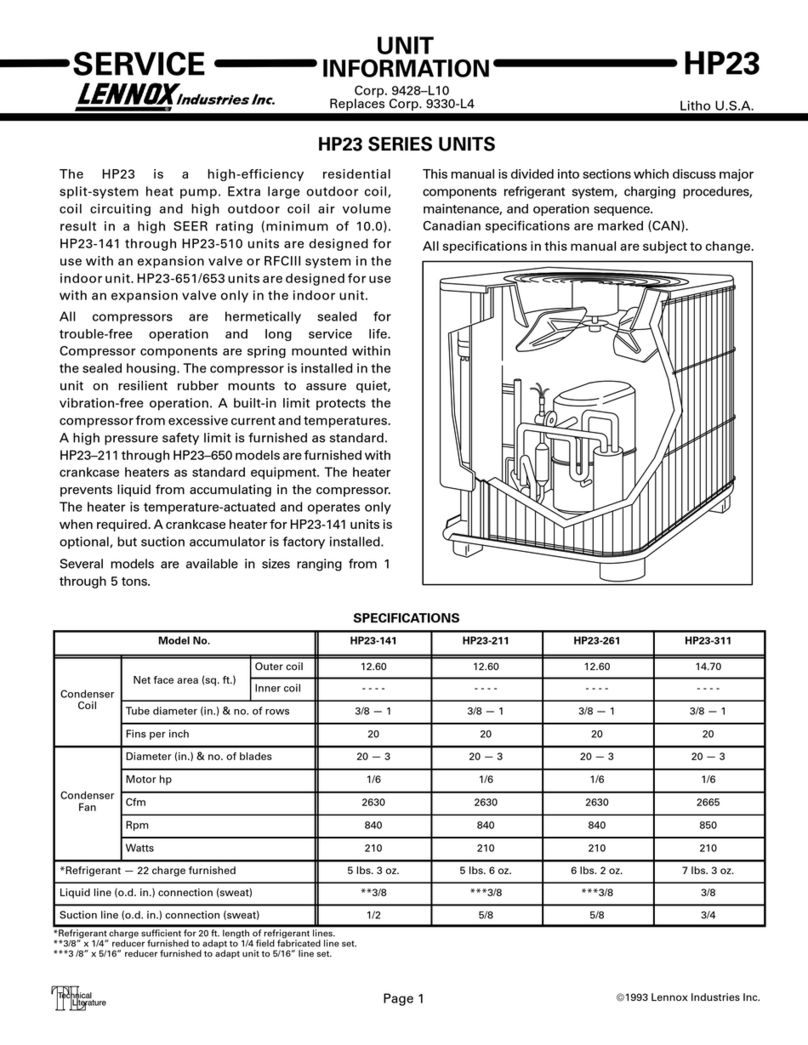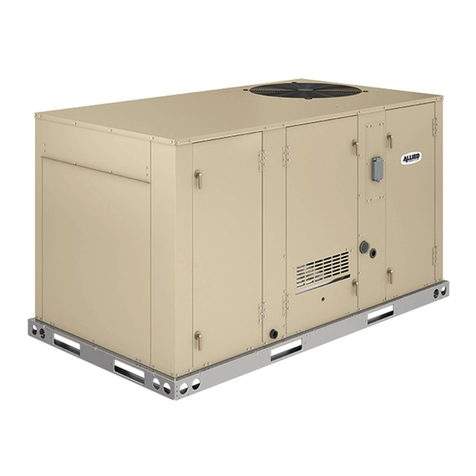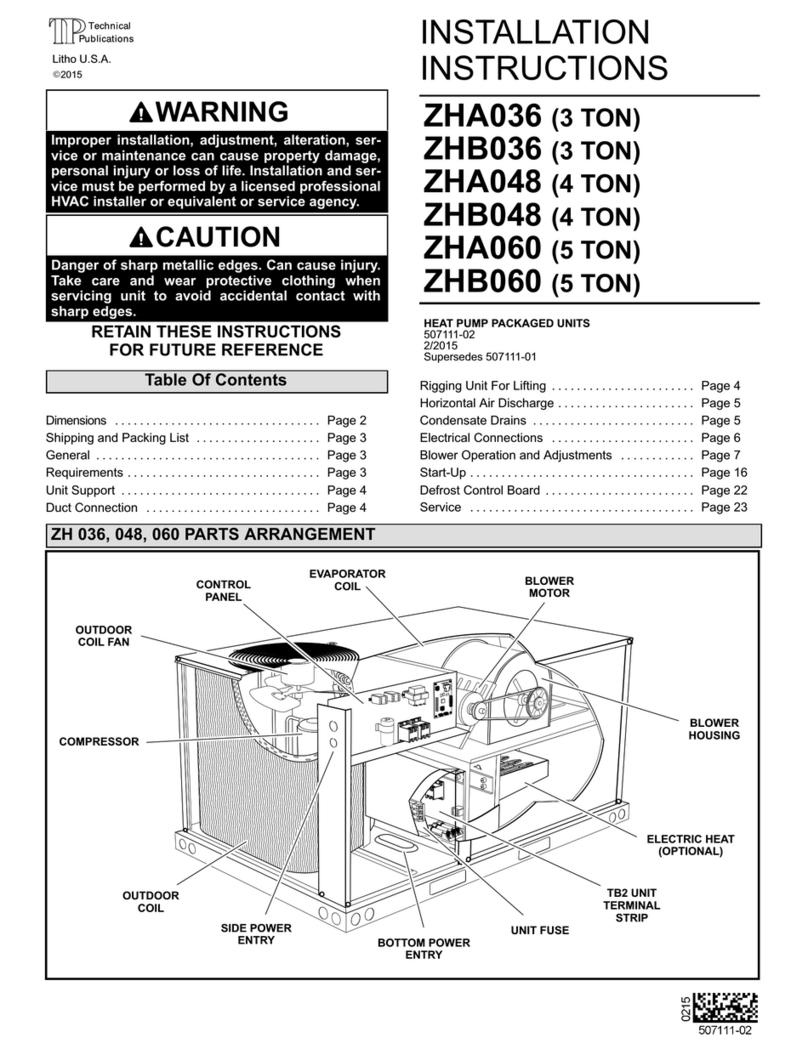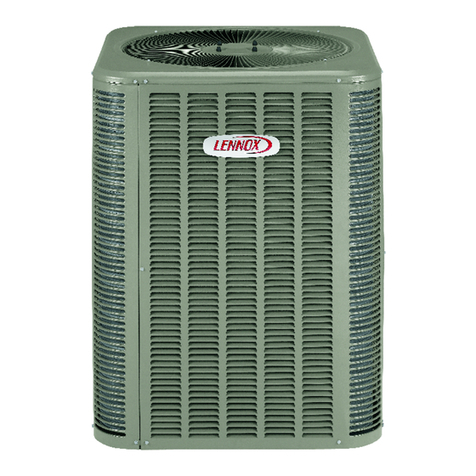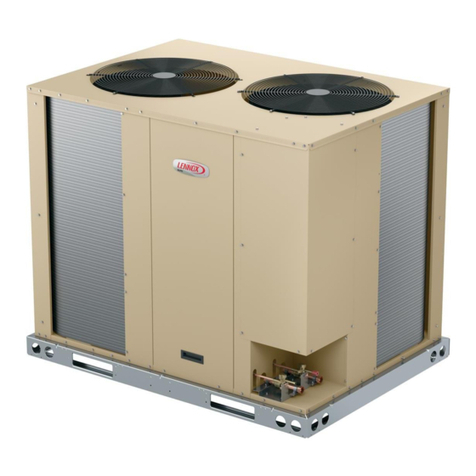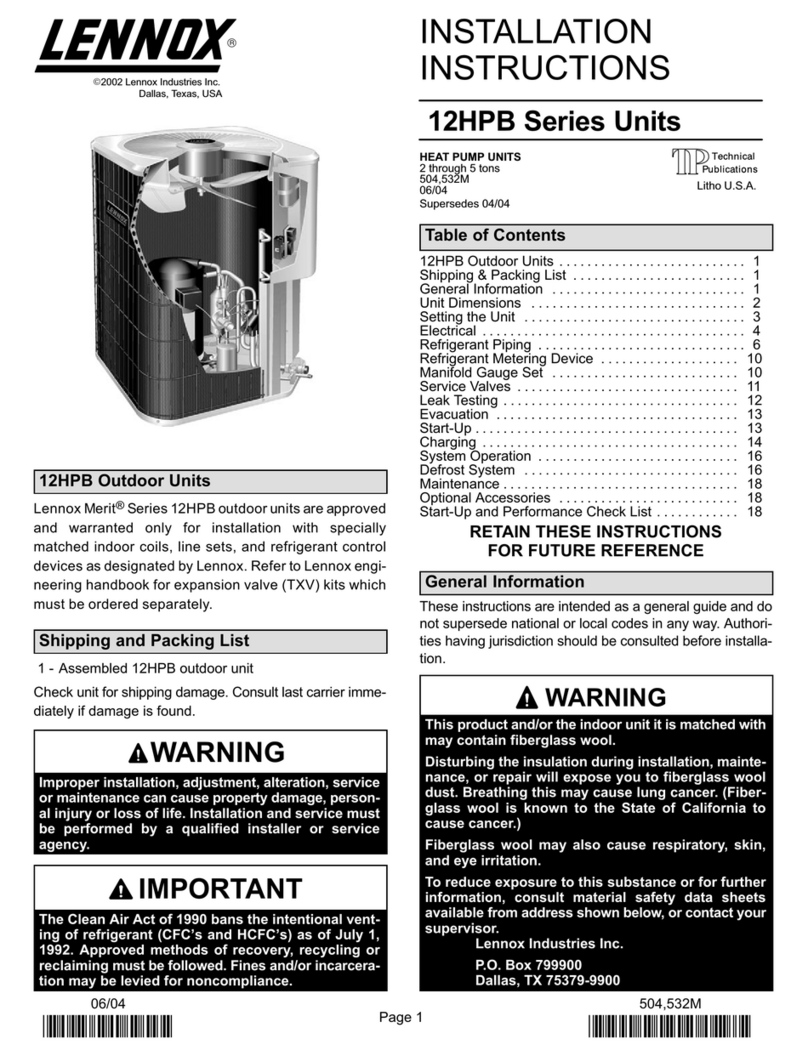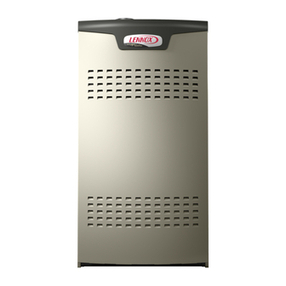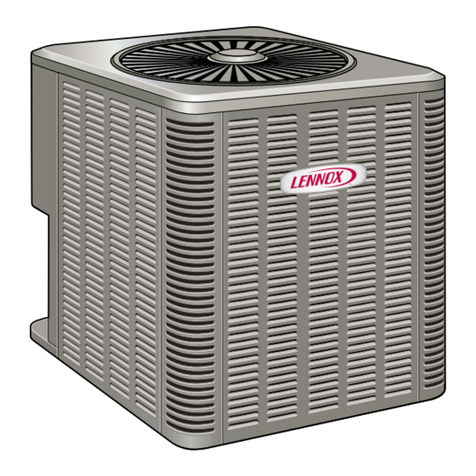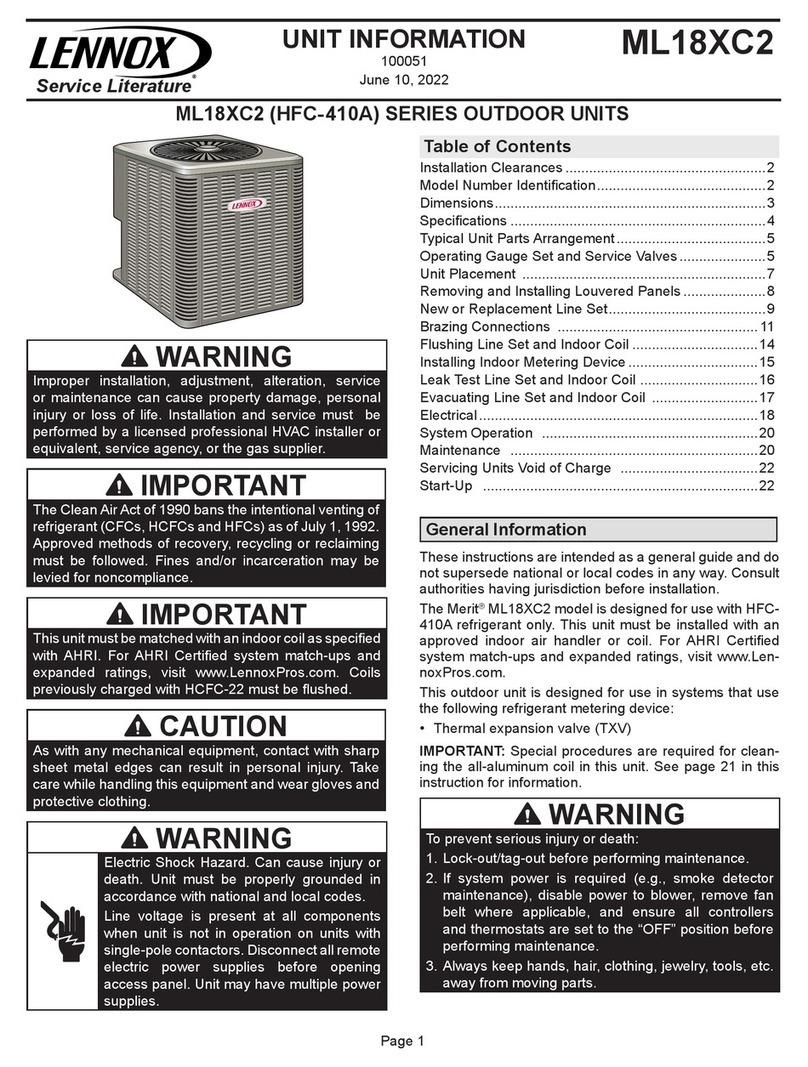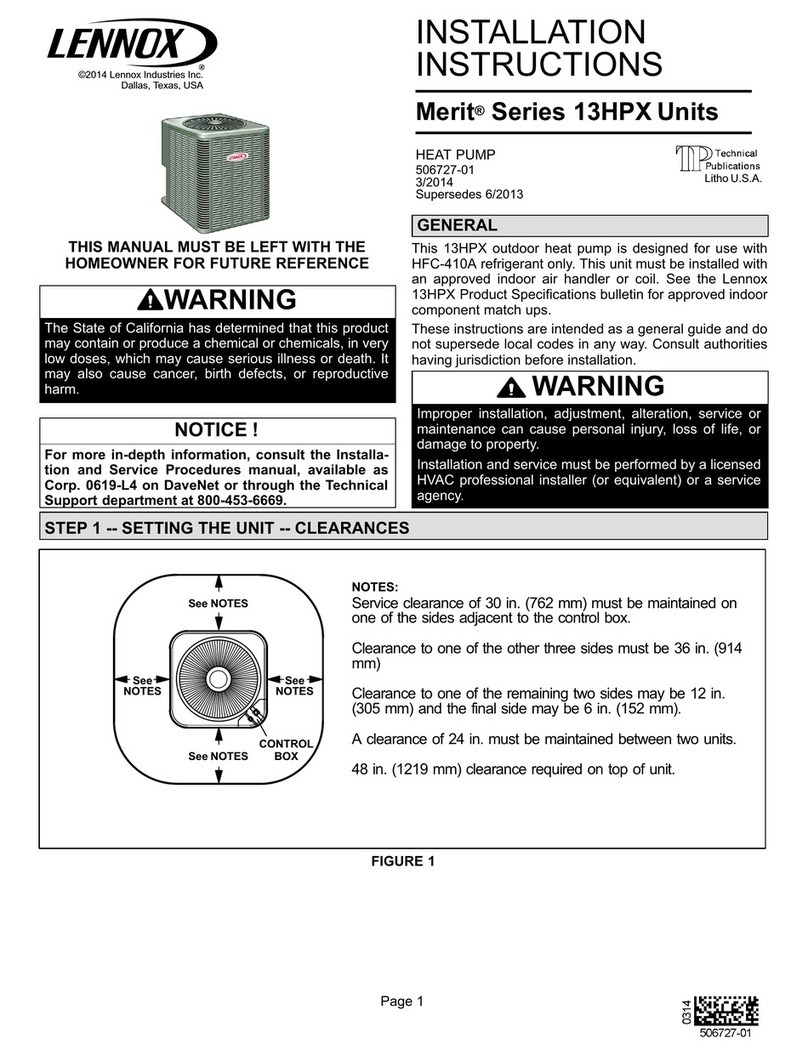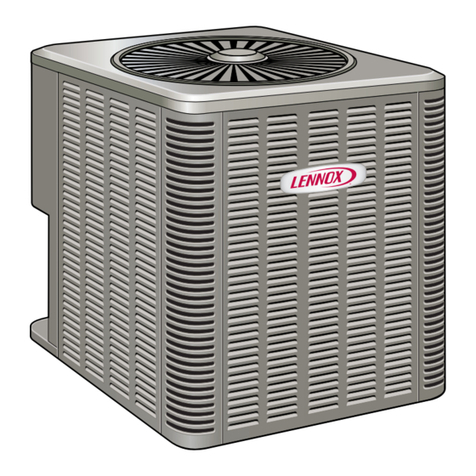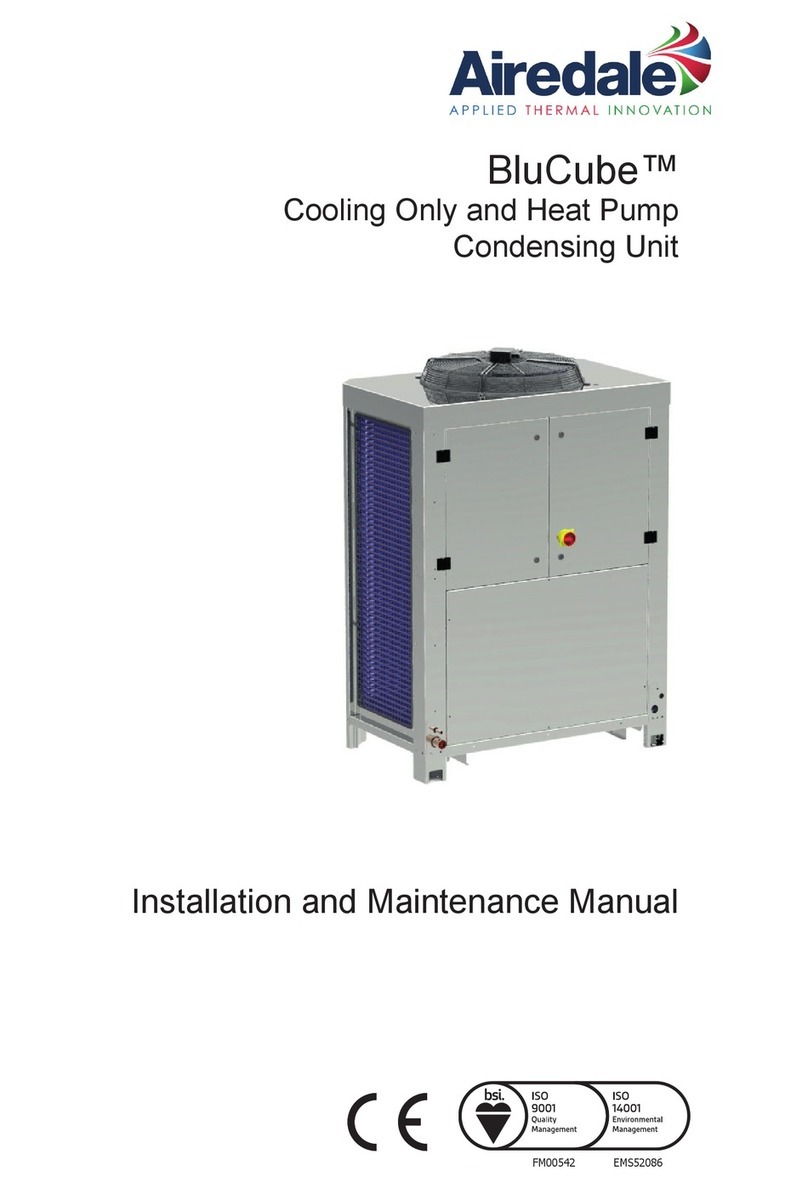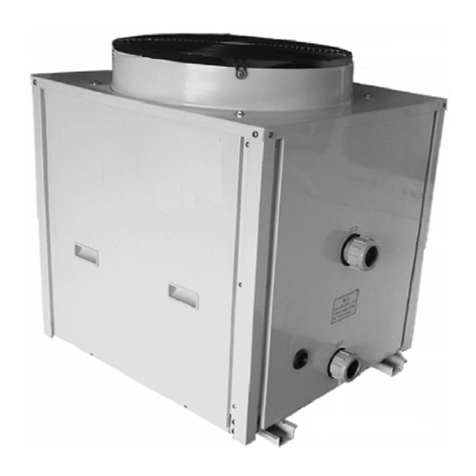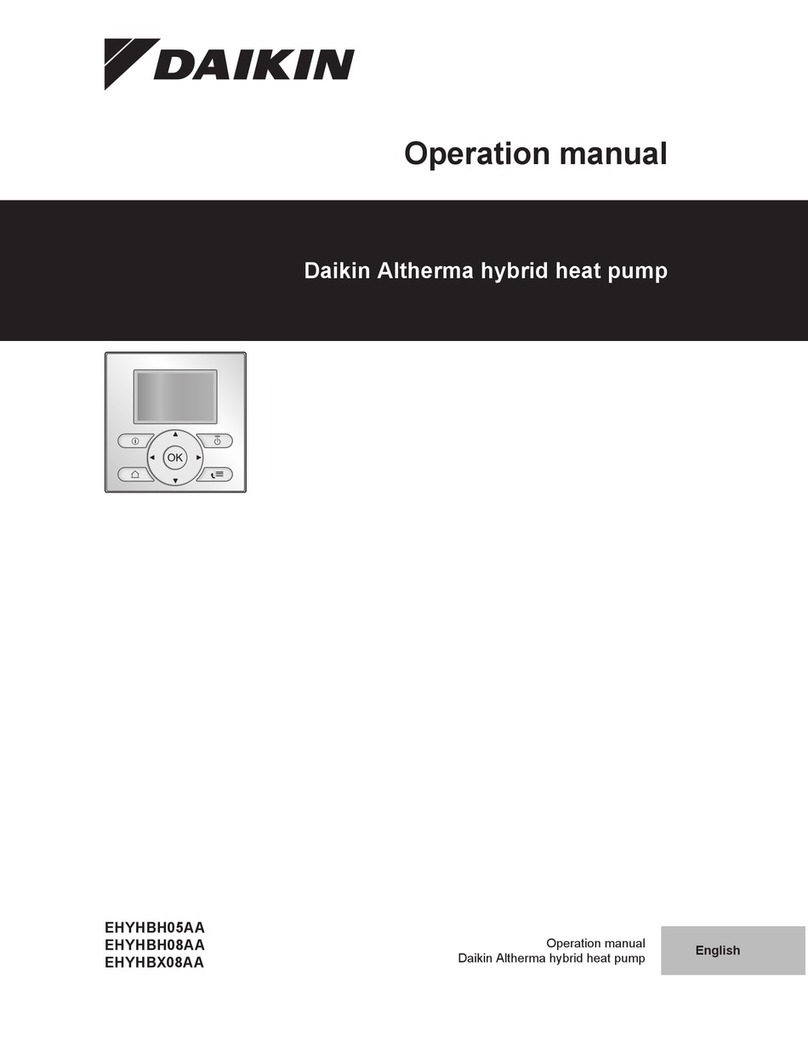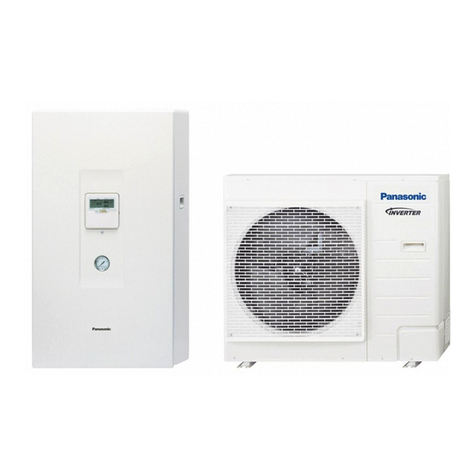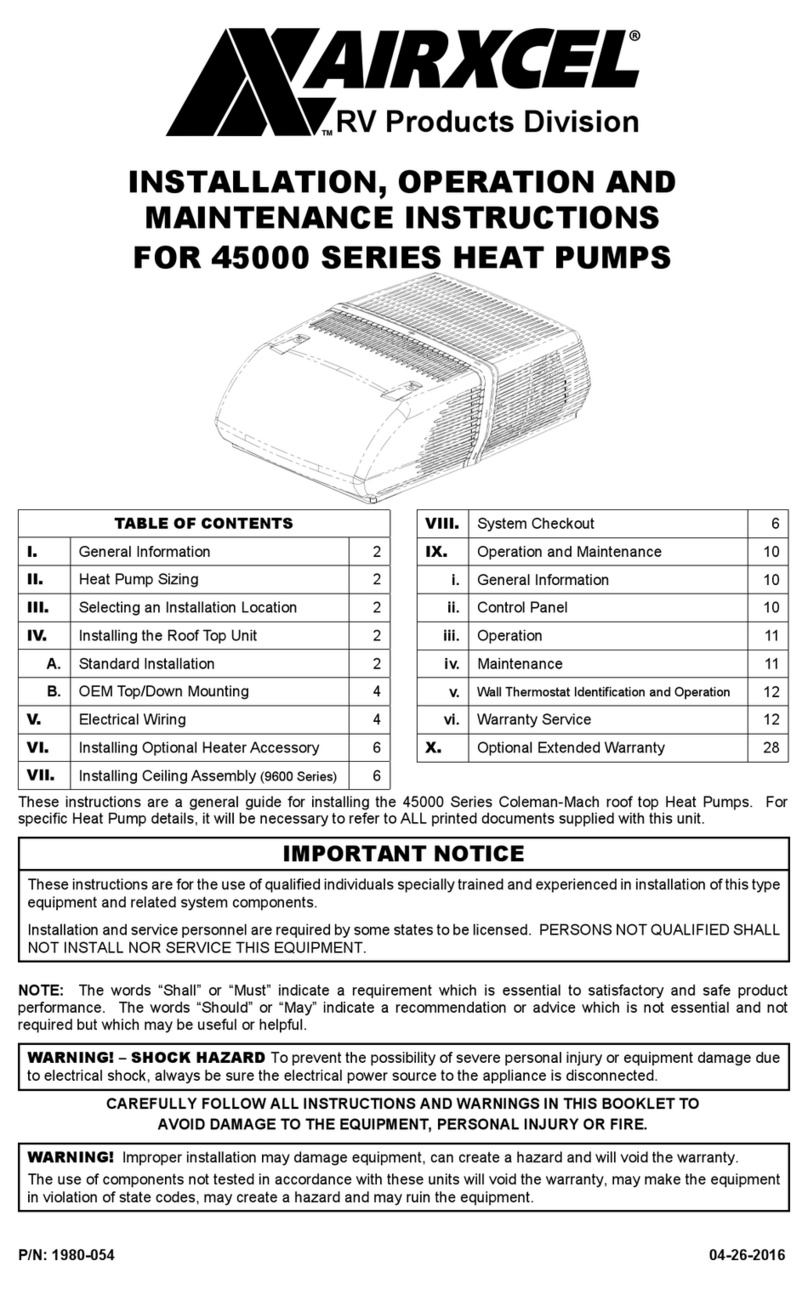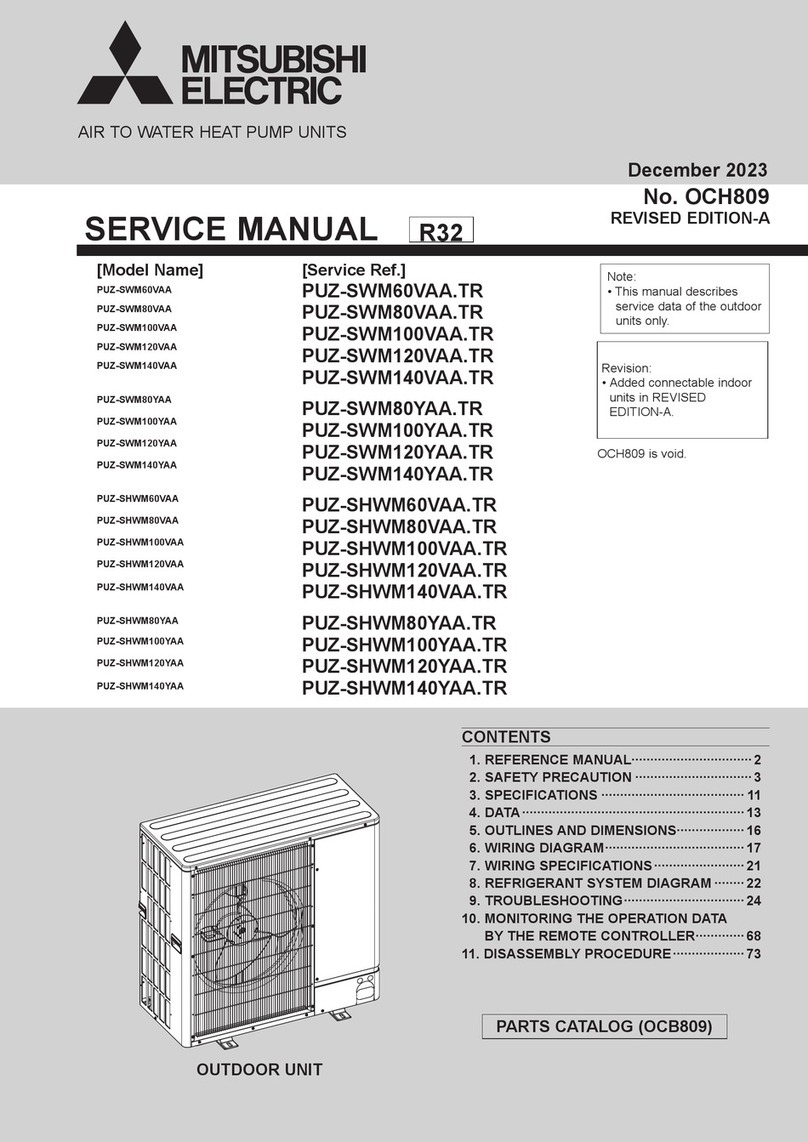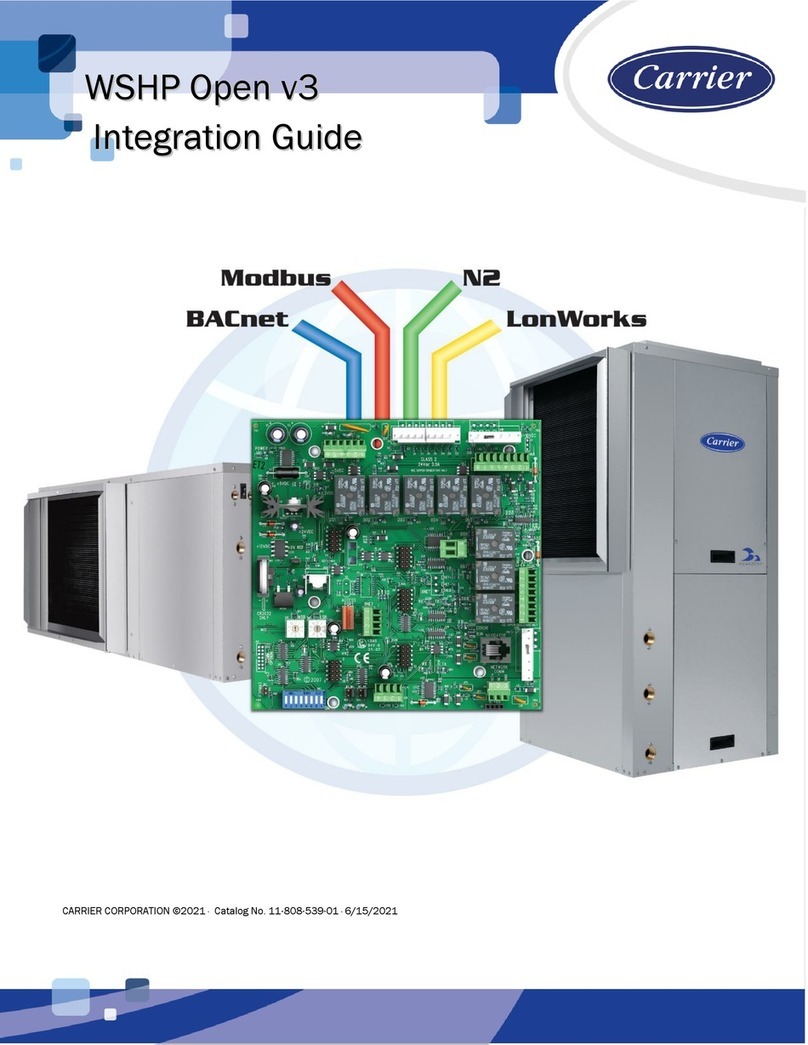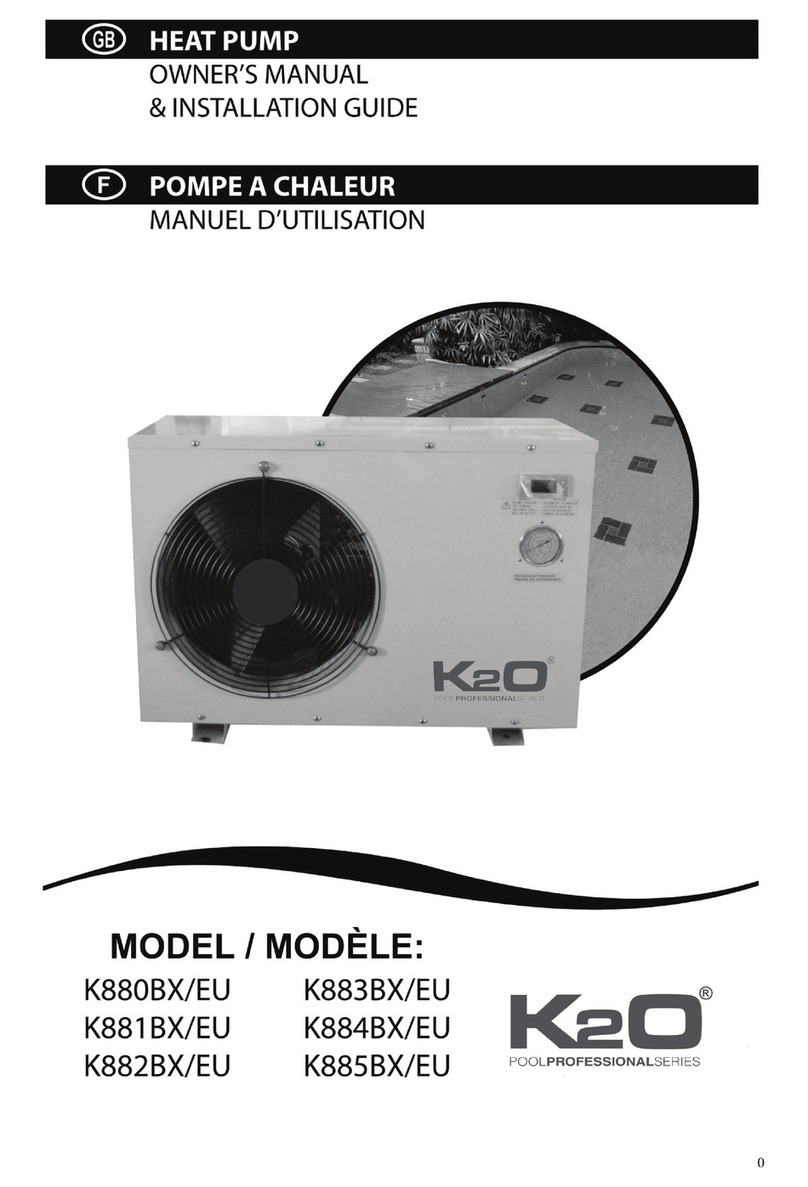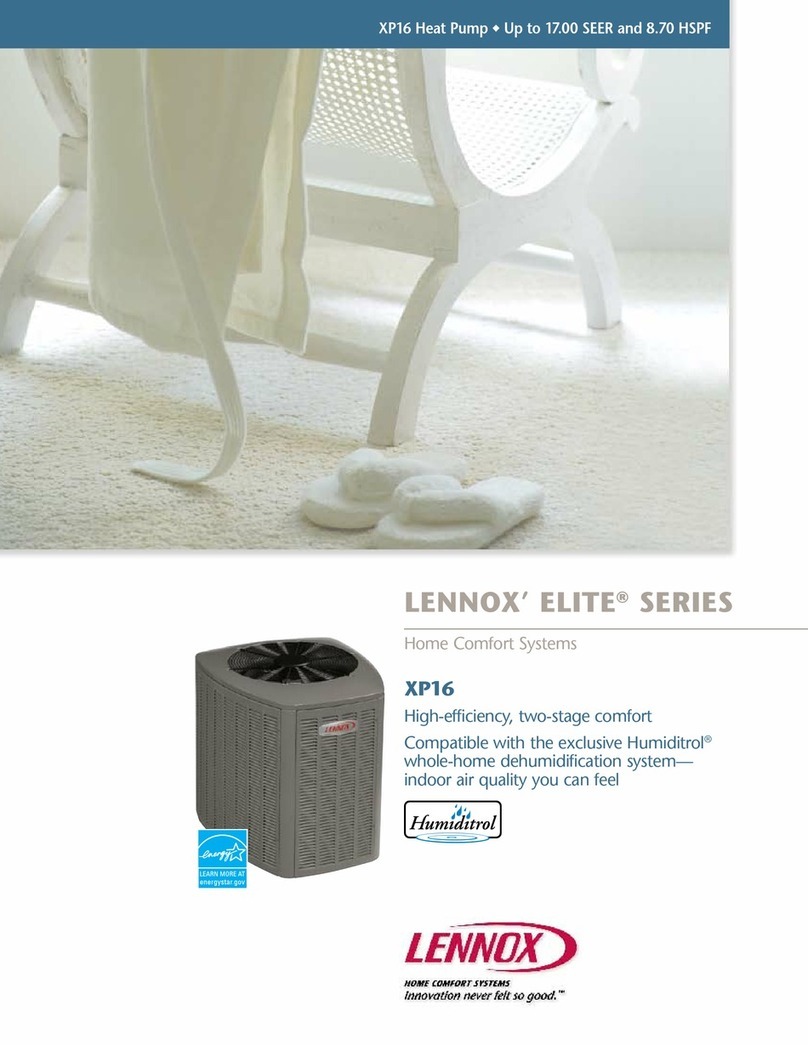
Page 10
505244M 10/09
While nitrogen is flowing, braze refrigerant line set
to the indoor and outdoor units. IMPORTANT: The
flow of nitrogen must have an escape path
other than through the joint to be brazed.
3. Use silver alloy brazing rods (5 or 6 percent minimum
silver alloy for copper−to−copper brazing or 45 percent
silver alloy for copper−to−brass or copper−to−steel
brazing) which are rated for use with HFC−410A
refrigerant.
4. Wrap a wet cloth around the valve body and the copper
tube stub to protect it from heat damage during
brazing. Wrap another wet cloth underneath the valve
body to protect the base paint.
NOTE − The tube end must stay bottomed in the fitting
during final assembly to ensure proper seating,
sealing and rigidity.
5. Install a field−provided check expansion valve
(approved for use with HFC−410A refrigerant) in the
liquid line at the indoor coil.
Flushing Existing Line Set and Indoor
Coil
IMPORTANT
If this unit is being matched with an approved line
set or indoor coil which was previously charged
with HCFC−22 refrigerant, or if it is being matched
with a coil which was manufactured before
January of 1999, the coil and line set must be
flushed prior to installation. Take care to empty all
existing traps.
Polyol ester (POE) oils are used in Lennox units
charged with HFC−410A refrigerant. Residual
mineral oil can act as an insulator, preventing
proper heat transfer. It can also clog the check
expansion valve, reducing system performance
and capacity.
Failure to properly flush the system per the
instructions below will void the warranty.
WARNING
Danger of fire. Bleeding the
refrigerant charge from only the high
side may result in the low side shell
and suction tubing being
pressurized. Application of a brazing
torch while pressurized may result in
ignition of the refrigerant and oil
mixture − check the high and low
pressures before unbrazing.
CAUTION
This procedure should not be performed on
systems which contain contaminants (Example:
compressor burn out).
IMPORTANT
The line set and indoor coil must be flushed with
at least the same amount of clean refrigerant that
previously charged the system. Check the charge
in the flushing cylinder before proceeding.
EQUIPMENT REQUIRED FOR FLUSHING LINE SET
The following equipment is required to flush the existing
line set and indoor coil:
two clean HCFC−22 recovery cylinders
oilless recovery machine with a pump down feature
gauge set for HCFC−22 refrigerant
gauge set for HFC−410A refrigerant (see Manifold
Gauge Set section on page 12).
FLUSHING PROCEDURE
1. Remove existing HCFC−22 refrigerant using the
following, applicable procedure as illustrated in figure
18:
If the existing outdoor unit is not equipped with
shut−off valves, or if the unit is not operational
AND you plan to use the existing HCFC−22
refrigerant to flush the system −
Disconnect all power to the existing outdoor unit.
Connect to the existing unit, a clean recovery
cylinder and the recovery machine according to
the instructions provided with the recovery
machine.
Remove all HCFC−22 refrigerant from the existing
system. Check gauges after shutdown to confirm
that the entire system is completely void of
refrigerant.
Disconnect the liquid and vapor lines from the
existing outdoor unit.
If the existing outdoor unit is equipped with
manual shut−off valves AND you plan to use NEW
HCFC−22 refrigerant to flush the system −
Start the existing HCFC−22 system in the cooling
mode and close the liquid line valve.
Pump all of the existing HCFC−22 refrigerant back
into the outdoor unit. (It may be necessary to
bypass the low pressure switches to ensure
complete refrigerant evacuation.)
When the low side system pressures reach 0 psig,
close the vapor line valve.
Disconnect all power to the existing outdoor unit.
Check gauges after shutdown to confirm that the
valves are not allowing refrigerant to flow back into
the low side of the system.
Disconnect the liquid and vapor lines from the
existing outdoor unit.
2. Remove the existing outdoor unit. Set the new
HFC−410A unit and follow the Brazing Connection
Procedure provided on page 9 to make line set
connections. DO NOT install HFC−410A
check/expansion valve at this time.
3. Make low voltage and line voltage connections to the
new outdoor unit. DO NOT turn on power to the unit
or open the outdoor unit service valves at this
time.




